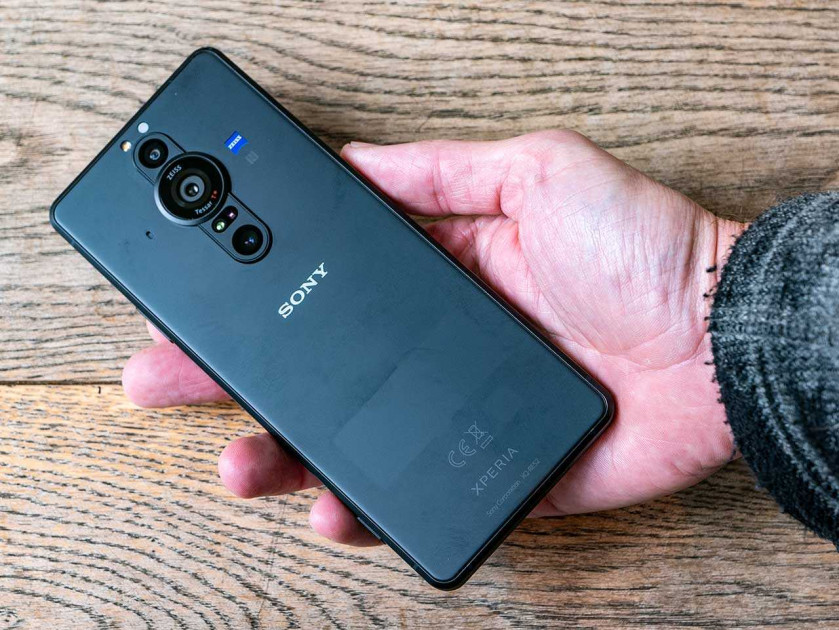Sony’s A7 range has long been their most popular camera series, hitting the sweet-spot between specs and price, and on October 21st at 3pm GMT / 10am EDT the brand new Sony Alpha A7 IV was unveiled.
The previous Alpha A7 III is one of the best-selling full-frame mirrorless cameras of all time, but nearly 4 years after it was first launched, it’s perhaps become a little long in the tooth.
Thanks to Sony themselves, all of the key specs for the new A7IV version have already been revealed, so we can now compare the two models to show you what’s changed.
With the street price of the 4-year old A7 III being significantly lower than the A7 IV at launch, why would you choose to buy the new kid on the block? We’re bringing you this in-depth Sony A7 IV vs A7 III comparison to help you choose between the two.
You can also read our detailed Sony A7 III review to find out exactly what we think of it in much more detail.
Sensor
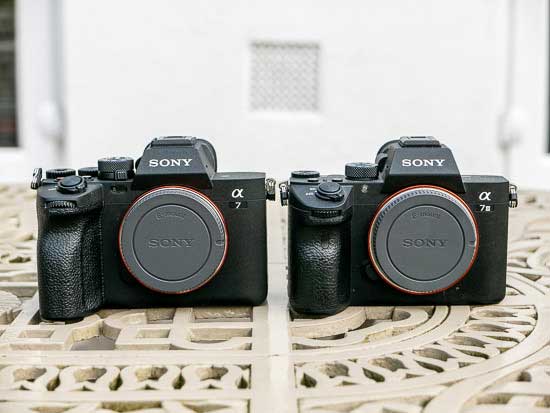
The A7 III has a 24.2 megapixel BackSide Illuminated (BSI) Exmor R sensor that delivers great stills image quality and 4K video.
24 megapixels has become the sweet-spot for most recent entry-level and mid-range mirrorless cameras, with much higher megapixel counts reserved for premium flagship models.
Backside Illuminated (BSI) is a special manufacturing process that should result in better image quality in low-light situations than cameras that have a non-BSI sensor with the same number of megapixels.
The A7IV is upping the ante by using a newly developed 33 megapixel Exmor R BSI CMOS sensor, which will presumably become the sensor of choice for all of Sony’s entry-level and mid-range full-frame cameras going forwards.
This new sensor gives it the edge in resolution over both the previous A7III (by 27%) and rivals like the Canon R6, Nikon Z6 II and the Panasonic S1, whilst not treading on the toes of the 42 megapixel A7R III or the 61 megapixel A7R IV.
Processor
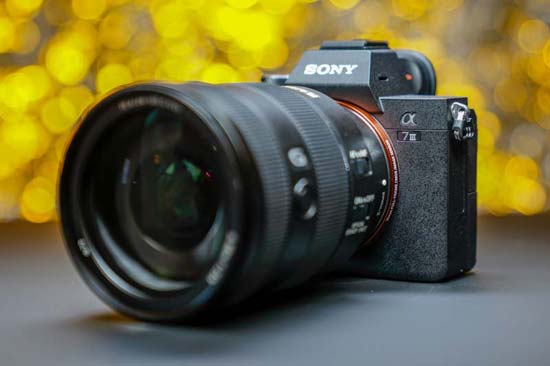
The new A7 IV uses the very latest BIONZ XR processor, as previously found in the A7S III camera, which offers a whopping 15+ stops of dynamic range.
This processor also offers 8x more processing power than the BIONZ X processor found in the A7 III, itself no slouch.
ISO Speed
There’s almost nothing to choose between the two models here, with both the A7 III and A7 IV offering ISO ranges that run all the way up ISO 204,800.
Both cameras have a native range of 100-51,200 for stills, which can be pushed two stops further to ISO 204,800, and can drop down to ISO 50 if required.
For video the A7III allows you to use the full expanded ISO 50-204,800 range, whereas the new A7IV starts at ISO 100 and tops out at 102400.
Video

The A7IV offers 4K UHD video recording in the XAVC S-I format, up to 60fps at 4:2:2 color depth in 10-bit to the inserted memory card or over HDMI to compatible third party recorders with either Long GOP or All-Intra frame encoding.
4K/30p video is oversampled from 7K in full-frame, but unfortunately 4K/60p is oversampled from 4.8K in the APS-C Super 35 mode.
So when shooting in 4K at 30p, the camera utilises the full width of the image sensor to oversample from 7K’s worth of data, but at 60p, a 1.5x crop is applied.
It supports the S-Cinetone, HLG, S-Log3 and S-Log2 profiles.
There is no 4K/60p or 10-bit recording at all on the older A7 III and it also applies a 1.2x crop to 4K/30p video, so while Super 35mm 4K/60p on the A7IV is disappointing, it’s still a big step forwards from the Mark III camera.
They can both record Full 1080 HD at up to 120fps, with the dedicated Slow and Quick motion mode offering frame rates ranging from 1fps to 120fps.
The A7 IV also has quite a few features inherited from the A7S III that set it apart from the A7 III.
These include the A7S III’s AF Speed settings, no recording time limits at all, a blue peaking colour, the ability to shoot vertical videos, live streaming support, and dual NTSC and PAL recording on the same memory card without having to reformat it.
In addition, the one-touch movie button has been relocated from its rather awkward position from the rear of the A7 III to the top-panel of A7 IV.
The Sony A7 IV also supports the Digital Audio Interface (via MiShoe) to enable use of the ECM-B1M digital shotgun microphone.
The new A7IV also has a range of new video settings that you won’t find on the A7III, including Breathing Compensation to help reduce focus breathing with certain Sony lenses, Shockless White Balance to make manual changes in white balance more smooth, Flexible Exposure Mode to switch between auto and manual exposure settings separately for the aperture and shutter speed, and two types of Shot Marks to mark favourite takes or scenes,.
Creative Looks
The A7IV inherits the ten Creative Look presets for JPEG pictures from the A7S III and A1 models, and an additional six ‘custom’ presets can be manually stored for quick access.
These can be applied to both stills and video, also USB streaming too, whereas the Creative Styles found on the A7 III were really only meant for still photos.
The presets are Standard (‘ST’), Portrait (‘PT’), Neutral (‘NT’), Vivid (‘VV’), ‘VV2’, ‘FL’, ‘IN’, ‘SH’, Black & White (‘BW’) and Sepia (‘SE’).
Autofocus
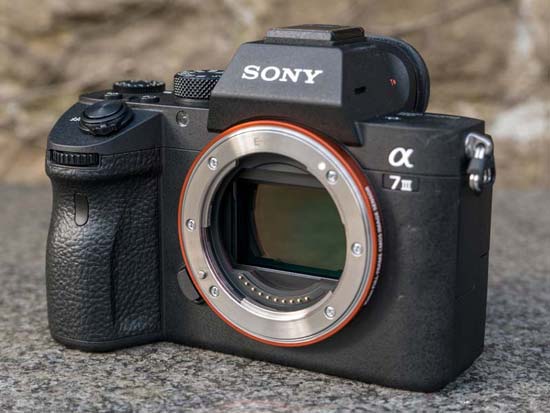
The A7 IV’s auto-focus system supports Real-time Tracking AF and also Human, Animal and Bird Eye AF, all for both stills and movies, making it the first Sony camera to offer such comprehensive AF support for both shooting modes.
The A7 III didn’t have these features when it was originally launched, but Sony did add real-time Eye AF for animals (but not birds) via the Version 3.0 firmware update at the end of 2020.
It only works for stills, though, not video too, and the A7 III doesn’t support Real-time Tracking AF at all, continuing to use the previous Lock-On AF system instead
Sony claims that the accuracy of Eye AF has been improved by 30% in comparison to the older A7 III.
The new A7IV has exactly the same autofocus system as the A7S III and flagship A1, with 759 on-sensor phase-detect points, supported by 425 contrast detect points that work down to -4EV.
Also the autofocus system on the A7 IV works down to f/22 versus f/11 on the A7 III for burst shooting.
It also has the recent focusing algorithm that’s the same as the one used by the recently released A7S III, which is claimed to make the already excellent AF tracking system even more reliable.
This is slightly better than the A7 III, which has 693 phase-detection points that cover 93% of the frame, plus 425 contrast-detection points, with the system working all the way down to -3EV low-light.
New to the A7 IV for videographers is the AF Assist function, which smoothly switches between auto and manual focus by rotating the focus ring to switch into MF and shift focus to a different subject, with AF resumed when the ring rotation stops.
Also new is the Focus Map feature which lets you easily visualise depth of field when you’re shooting. When enabled, Focus (depth map) information is overlaid on a display of the live view in real time, so you can easily see which areas are in or out of focus.
Burst Shooting
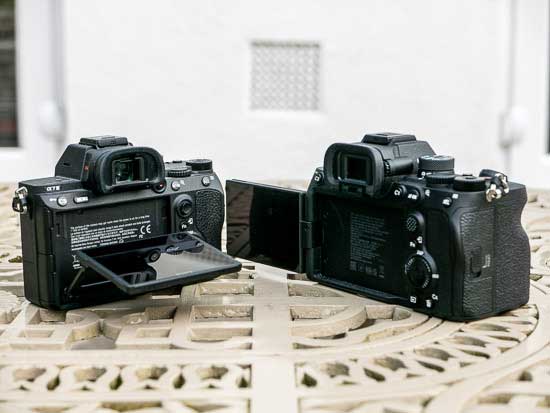
The two models are perhaps surprisingly evenly matched when it comes to the headline continuous shooting speeds.
They both offer 10fps burst shooting with Full AF/AE tracking, although the A7IV only offers that rate if you shoot JPEGs and/or compressed Raws.
The burst speed does drop quite dramatically, though, to just 5-6fps if you want to shoot either uncompressed or lossless compressed Raw files, which we suspect a lot of users would prefer.
Note that the A7III doesn’t support the lossless compressed format – it’s either compressed or uncompressed.
With main rivals like the Canon EOS R6 offering 20fps burst shooting, it’s somewhat perplexing to see the A7IV sticking with the fastest 10fps speed too.
The A7 IV does at least have a much larger buffer than the A7 III, though, especially when shooting Raw files, being able to shoot at 10fps for up to 830 JPG+RAW (uncompressed) or 1,000 JPGs, lossless compressed or compressed RAW in one high-speed burst, whereas the A7III could only manage a still very respectable 79 JPG+RAW images or 82 JPGs, 89 compressed RAW or 40 uncompressed RAW images.
There is a pretty big caveat for the A7IV’s improved buffer to be aware of – it can only be achieved when using a Cfexpress Type A card, which are much more expensive than SD cards, with the fastest rate dropping to 8fps if you use the latter.
Body
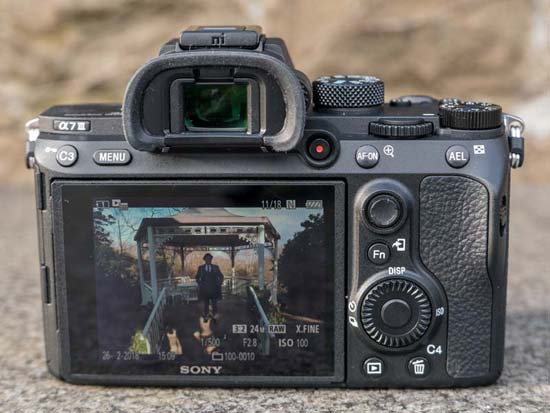
The A7 IV doesn’t follow in its older brother’s footsteps – instead it has almost exactly the same body design and uses the same heatsink system as the A7S III.
For such a feature-rich camera, the Sony A7IV remains impressively compact. It has a magnesium alloy body that only weighs around 658g with battery and memory card installed, just 8g more than the A7 III, and despite being slightly larger and thicker than its predecessor.
Thanks to a generous handgrip the Alpha 7 IV will feel very comfortable to hold.
The body has improved sealing so it can be counted upon in adverse conditions. It also features a ‘heat dissipation’ design.
That promises no fans, no overheating, and unlimited video recording times in any resolution.
On the top there’s a shooting mode dial with a new separate Photo / Video / S&Q switch underneath, with the camera remembering basic exposure settings in each mode, a never-seen-before feature on a Sony Alpha camera.
There’s also a one-touch movie record button, twin exposure dials plus a brand new unmarked, lockable dial which can be customized to set either the shutter speed, aperture, ISO speed, drive mode, focus mode or, as traditionally, exposure compensation, although there is no top LCD panel.
It is now possible to connect an external monitor directly to the A7 IV via the new full-size HDMI port, which is better than the micro HDMI port found on the A7 III.
Finally, the A7IV inherits the latest menu system from the A7S III and A1, rather than the outdated, clunkier menu used by the A7III.
Image Stabilisation
The A7 IV has built-in image stabilisation worth up to 5.5 shutter speed stops, the same as on the A7S III.
It also gets a new feature called Active Mode that increases stabilization for movie shooting, again inherited directly from the A7SIII.
The older A7 III also has a 5-axis in-body image stabilisation system but it’s only worth up to 5 stops, and it doesn’t support Active Mode.
Just like the A7S III, you can also stabilise the A7IV’s footage in post-production using data from the camera’s gyro sensor and the Sony Catalyst software.
Viewfinder
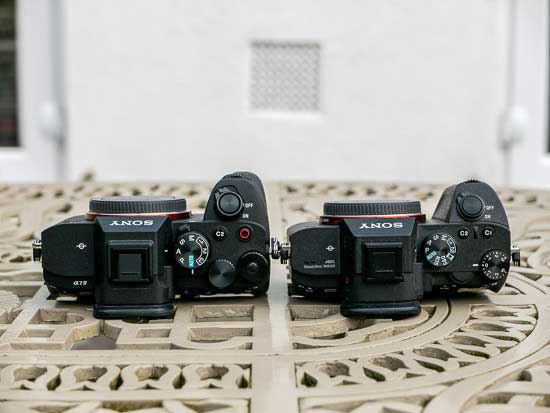
The A7 IV has a higher-resolution, 3.69m-dot EVF that has a refresh rate of up to 120fps, the same as the one used on the A7R III and A9 II models.
This features 100% scene coverage, 0.78x magnification and a 120fps high frame rate option to help track moving subjects more smoothly with virtually no lag.
This is better than the 2.36 million dot XGA OLED electronic viewfinder used by the older A7 III, which has the same magnification but is lower-resolution and only goes up to 60fps refresh rate.
LCD Screen
The A7 IV has a fully articulating 3-inch, 1.03-million-dot LCD screen with improved touchscreen functionality, including focusing and navigating the much improved user interface and main menu system.
The A7 IV’s screen has a vari-angle design that’s been inherited directly from the A7S III, which for some users will represent a big improvement on the A7 III’s more limited 180-degree flip-up design.
You can flip out the screen to the side, rotate it forwards for easier operation when pointing the camera at yourself, and fold it flat against the back of the camera to stop it from getting scratched.
It’s simply a much more versatile screen for vlogging, movie shooting and photography in general.
Memory Cards
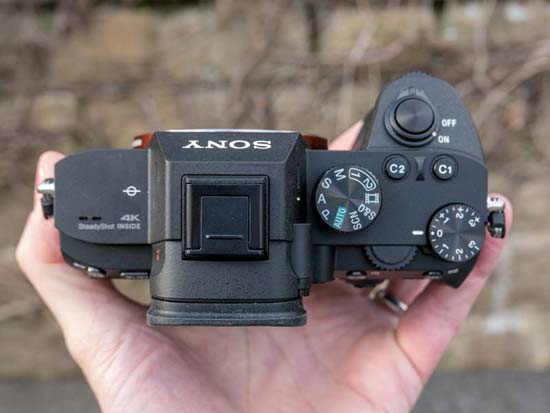
The Sony A7 III was clearly ahead of its time by being one of the first mirrorless cameras to have two SD card slots, although only one of them takes advantage of the faster UHS-II standard.
The new A7 IV also has dual card slots, but one of these slots can now interchangeably use UHS-II SD-cards and faster CFexpress Type A cards, just like the A7S III.
Battery Life
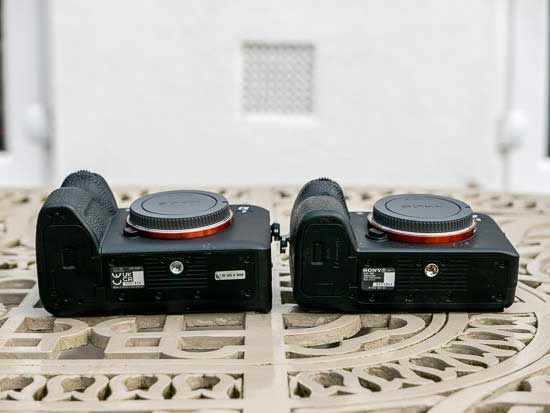
The Sony A7 IV uses exactly the same large capacity NP-FZ100 battery as the A7 III, A7C and the A6600 models.
It offers a CIPA-rated battery life of 610 shots when using the LCD screen, which is actually shorter than the A7 III’s 710 shot life (for the LCD screen), maybe a consequence of using the faster BIONZ XR processor.
Both cameras can also be powered and charged via a USB-C connection, which is useful if you’re out and about and have a compatible powerbank to plug the camera into.
Wi-fi
The new A7IV benefits from an upgrade to the fastest 5GHz Wi-Fi connectivity, whereas the older A7III is limited to 2.4GHz.
USB Streaming
The Sony A7 IV becomes the latest camera launched in 2021 to offer in-camera USB streaming – 10Gbps live streaming via its USB-C port to be exact – allowing you to use the camera as a webcam. It supports up to 4K/15p or more usefully 1080/60p.
The much older A7 III model doesn’t offer such a seamless experience – instead you have to use Sony’s Imaging Edge software to turn it into a webcam.
Price
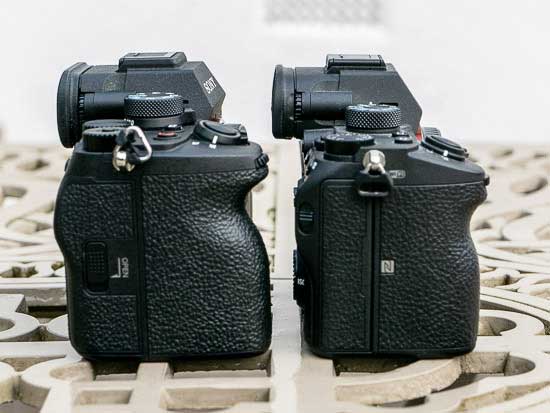
One of the more controversial aspects of the new Sony A7 IV is its launch price.
At £2399 / €2799 / $2499 body-only in the UK, Europe and the USA respectively, it is a lot more than the current street price of the A7 III, which can be picked up for around £1699 / $1799.
Whilst the A7 III has been on the market for a few years now and has naturally declined in price, we still think that Sony is being somewhat over-ambitious with the A7 IV.
It’s no longer the “entry-level” model that it’s predecessor clearly was – instead the A7 III will continue in that role (Sony always carry on selling previous models), along with the more compact Alpha A7C.
Conclusion
Creating the successor to one of the most popular full-frame cameras of recent years was always going to be a difficult task, especially at a time of rising prices and component shortages.
A lot has changed in the four years since the A7 III was released, and it’s clear that the new Mark IV is a much more capable hybrid camera than its predecessor, on paper at least.
But it’s also substantially more expensive than its older brother, and also than main rivals such as the Canon EOS R6, Nikon Z6 II and Panasonic S1R.
So what do you think – have Sony struck the right balance between stills and video? Is the A7 IV a worth successor? Leave a comment below!


